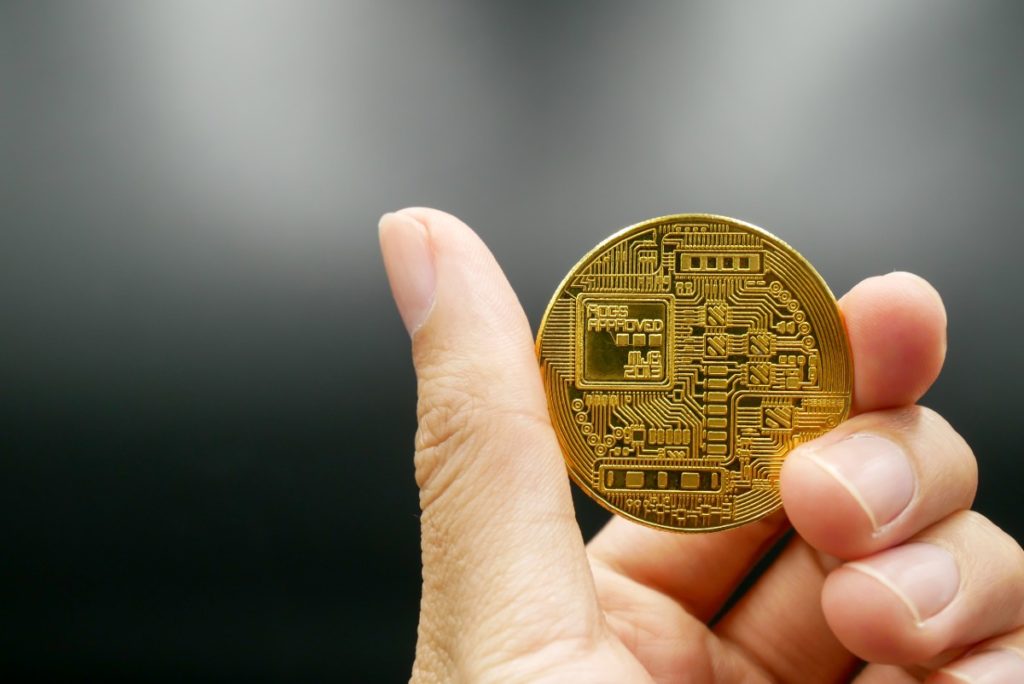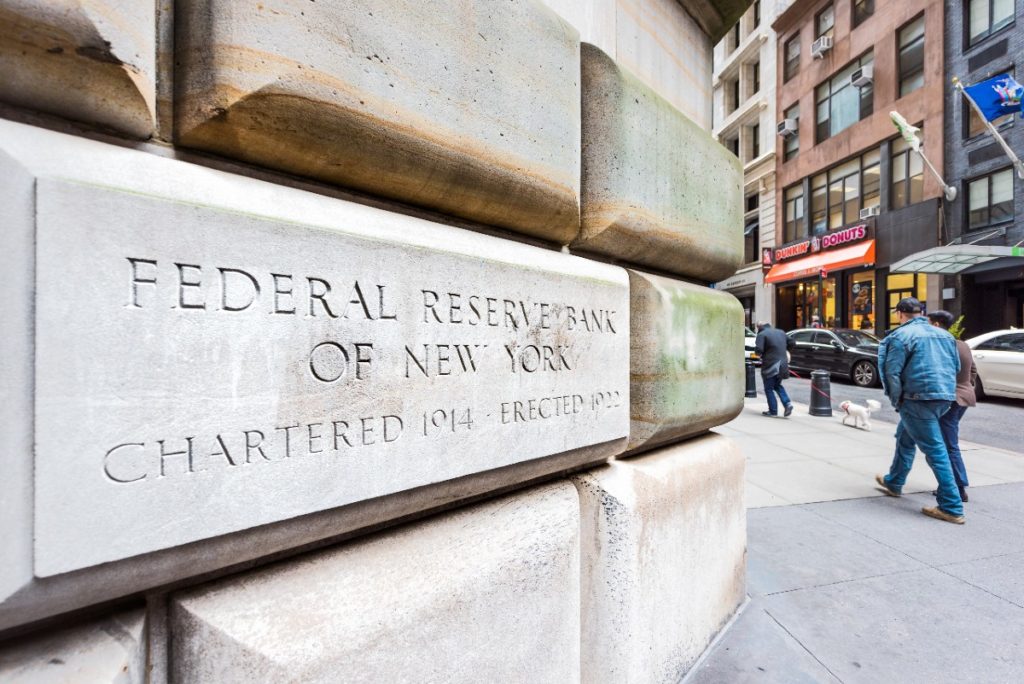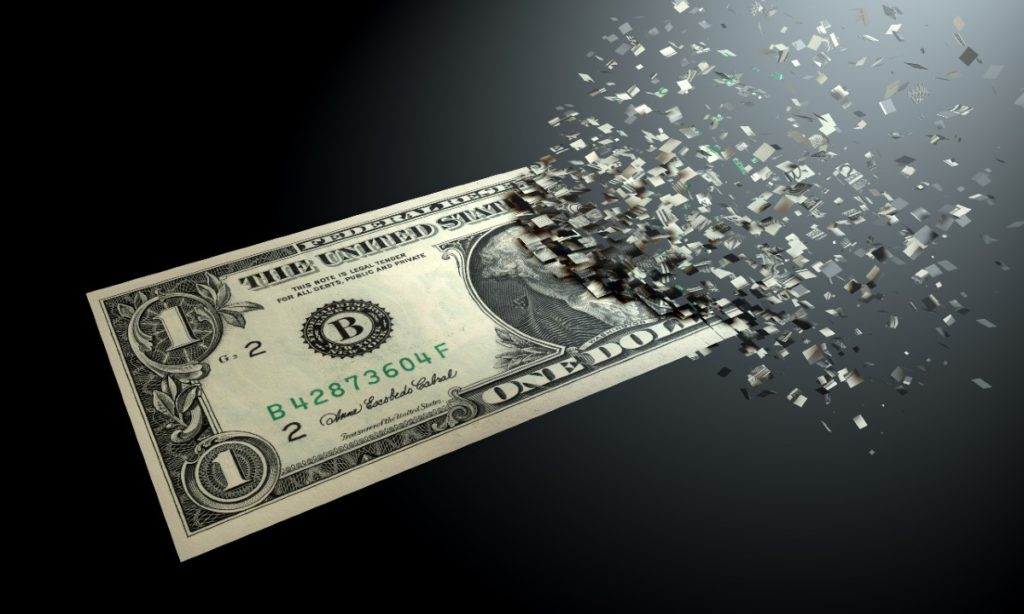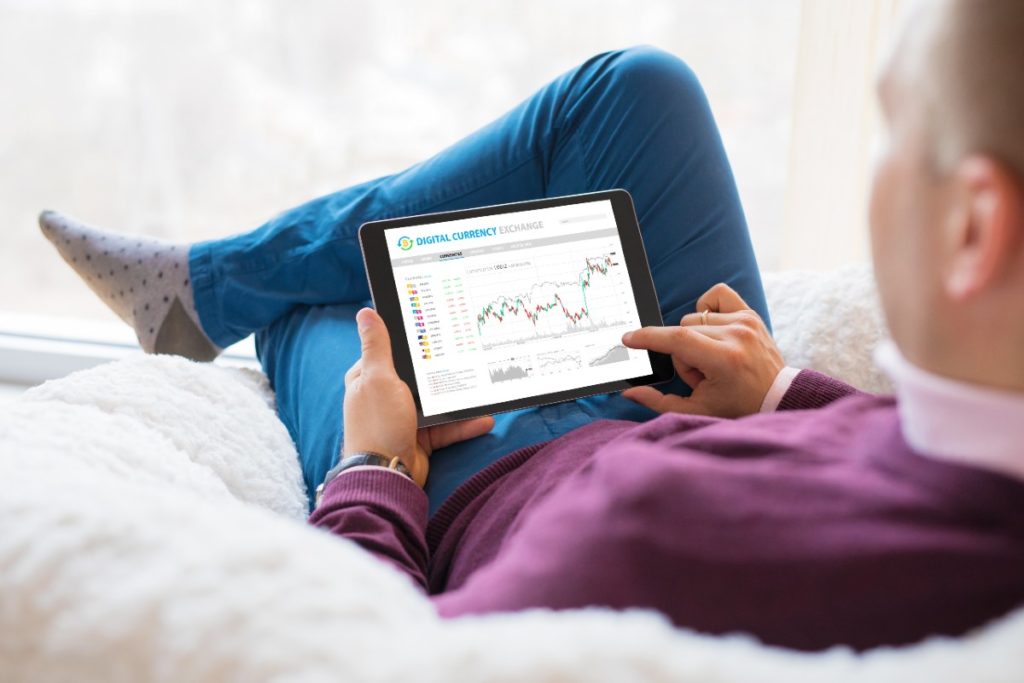2020 has shown us many things, and in the financial world, a standout is that digital dollars are an inevitability. Now the questions remain: How do we implement this safely? Who will benefit from this? What does the timeline look like?
What Are Digital Dollars?
Here’s the crash course version of digital currency: it’s a unique digital signature that is assigned a value. You have likely heard of Bitcoin, one of the most popular cryptocurrencies out there. These types of digital currency run on blockchain technology.
 Blockchain is a type of tech used to keep records. Each piece of information added to the “chain” is called a “block.”
Blockchain is a type of tech used to keep records. Each piece of information added to the “chain” is called a “block.”
In the case of digital dollars, transactions are blocks. They are stored on the chain by incorporating their unique signature (a hash) with the previous block’s signature, creating a long chain of documentation that is difficult – nearly impossible – to alter.
What makes this type of record-keeping unique is its storage. There is no one centralized storage location for the records of these cryptocurrency transactions. Rather, they are dispersed across a network of computers that have opted in and passed a test.
Controlling, editing, or in any way altering blockchain records would necessitate infiltration of at least 51% of the computers involved in storing the records. As this often implies controlling millions of personal computers around the globe, it is considered extremely improbable and therefore safe enough to generate currency with.
Central Bank Digital Currency
In the near future of U.S. digital currency, the Federal Reserve will create a central bank digital currency (CBDC). Unlike Bitcoin – which was  created by a private citizen and is not controlled by a regulating body – a U.S. CBDC would be created and handled like cash and coins.
created by a private citizen and is not controlled by a regulating body – a U.S. CBDC would be created and handled like cash and coins.
The centralized nature of CBDC makes it unique in the cryptocurrency world. Transactions recorded in blockchain are virtually anonymous and encrypted. However, having them administered by a central bank takes away some of the “Wild West of the Internet” concerns most cryptocurrencies have had up to now.
CBDC’s are essentially fiat dollars, generally unbacked and simply assigned value. They permit fast, federal payouts. Citizens would no longer wait for their tax returns or stimulus money in emergent situations. The government would be able to directly distribute to any citizen, even those who were unable to manage traditional bank accounts.
Benefits of Using Digital Currency
Digital currency could solve several problems that the government faces, including how to reach citizens to pay them. For citizens who are “unbanked,” pairing digital currency with a plan to make fee-free banking available at public institutions, such as post offices, could be life-changing.
The indisputable nature of accounting with blockchain is attractive to those concerned about federal spending record-keeping. In this sense, the use of blockchain to create and track money could be a true asset to the American people and our governmental financial monitoring.
Concerns Regarding Digital Currency
However, this also has implications for potential inflation and control issues. In the hopes of balancing debt, CBDC could be over-inflated.  The fact that any potential CBDC is left solely in the hands of the Fed and could permit too much room for finagling fiscal policy raises concerns, as well.
The fact that any potential CBDC is left solely in the hands of the Fed and could permit too much room for finagling fiscal policy raises concerns, as well.
How involved will tech companies be in the creation of a CBDC? This question concerns some who express resistance to creating digital currency. Many feel large technology conglomerates (Google, Facebook, Amazon, etc.) are already out-pacing governmental supervision and regulation. They question whether or not permitting Silicon Valley to be involved in currency creation could disperse control to unwanted groups.
Which Countries Are Already Using CBDC?
Technically, none. However, some are trying it out. First up was the Bank of England. Central banks in Singapore, Sweden, Venezuela, Uruguay, and Thailand are also experimenting, as well as the People’s Bank of China and Bank of Canada.
In the coming year, more programs are planned to experiment with CBDC around the world. The balance of benefits versus concerns seeming to tip toward concerns for many involved in U.S. currency decision making, so there is a reluctance to roll out a large-scale digital currency trial yet.
 Uneasiness extends to more than just on our shores. There have been outright statements from Russia regarding the usefulness of these encrypted payments for transactions they wish to keep quiet. It is important to remember whichever technologies we adopt, our competition has access to, as well.
Uneasiness extends to more than just on our shores. There have been outright statements from Russia regarding the usefulness of these encrypted payments for transactions they wish to keep quiet. It is important to remember whichever technologies we adopt, our competition has access to, as well.
Keep the Change
A change is surely coming in the way our government creates and regulates currency. How exactly it will affect the average investor is still yet to be seen, but the pilot CBDC programs running in other countries should give a clue about results soon.
Talk to your investment advisor about how to take advantage of digital dollars and how to plan for the inflation that will likely accompany an introduction of a U.S. central bank digital currency. Get in touch with a Stableford Capital advisor to discuss digital currency and its direct impact on you by scheduling a complimentary 15-minute consultation.
